The stress of surgery is high, and imprecise tools can lead to serious errors. High-resolution monitors provide the clarity needed for precise surgical procedures, which makes them indispensable in modern operating rooms.
High-resolution monitors are crucial for modern surgery because they enhance detail visualization, support better differentiation of anatomical structures, and ultimately reduce surgical errors. These displays offer superior clarity, improving surgical precision and patient outcomes.
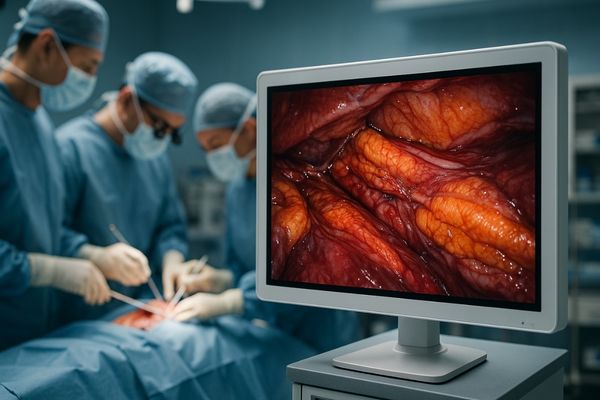
This article will explore the critical role of high-resolution monitors1 in enhancing surgical visualization2, examining how these technologies improve surgical precision and patient outcomes. Join us as we delve into the specifics of how better visuals lead to better results in the operating room.
High-resolution monitors deliver superior image clarity essential for surgical precision
Operating rooms require a high degree of accuracy, and if visuals are unclear, surgical outcomes can be severely compromised. Superior image clarity is essential for identifying critical anatomical details during surgery, improving the precision and efficiency of surgical procedures.
High-resolution monitors offer unparalleled image clarity, allowing surgeons to visualize intricate anatomical structures with exceptional detail. This enhanced clarity directly translates to more precise surgical maneuvers and improved patient safety.
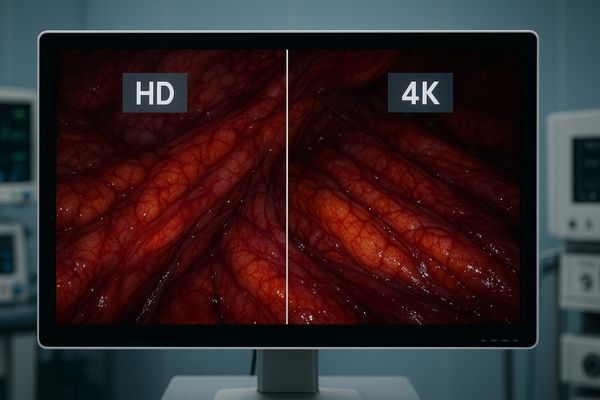
High-resolution monitors allow surgeons to see subtle tissue variations, which are important for telling the difference between healthy and diseased tissue. This enhanced visibility supports better decision-making during procedures. I have found that Reshin’s MS321PB 32" 4K surgical monitor3 provides the image clarity and color accuracy needed for intricate surgical procedures. High-resolution monitors show the surgical field in great detail, allowing surgeons to perform minimally invasive surgeries with enhanced precision. The high resolution also makes it easier to see small blood vessels and nerve endings, which helps reduce the risk of damage to those structures. This leads to shorter surgical times, fewer complications, and better patient recovery.
Here’s a comparison of standard HD versus 4K resolution in surgical monitors:
| Feature | HD Resolution (1080p) | 4K Resolution (2160p) |
|---|---|---|
| Pixel Count | 2 million | 8 million |
| Image Clarity | Standard | Superior |
| Detail Visibility | Limited | Enhanced |
| Surgical Precision | Good | Excellent |
| Common Use Cases | Basic surgeries | Complex procedures |
Enhanced visual detail supports better differentiation of anatomical structures
Complex surgeries require detailed visualization to clearly distinguish between different anatomical structures. Improved visual detail allows surgeons to accurately identify and differentiate tissues and organs, which is critical for avoiding errors during complex surgeries.
Enhanced visual detail from high-resolution monitors helps surgeons differentiate between similar anatomical structures, such as nerves, blood vessels, and tissues. This clarity is essential for performing precise and safe surgical procedures, ultimately leading to better patient outcomes.
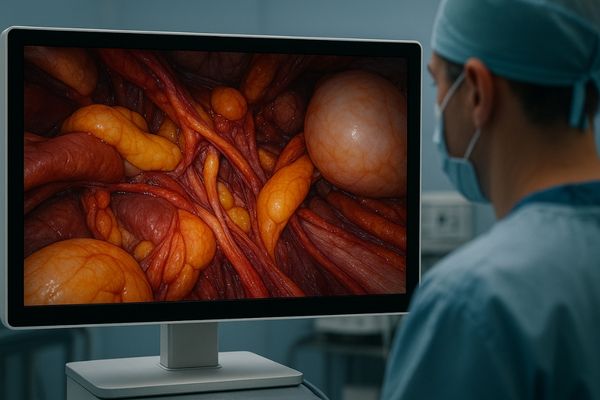
In delicate fields like neurosurgery or ENT, the clarity provided by high-resolution displays4 greatly affects a surgeon’s ability to operate safely and precisely. The detailed visuals reduce the risk of accidental damage to critical structures. I have seen how the Reshin MS430PC 43" 4K https://reshinmonitors.com/top-medical-display-manufacturers-2025/5 allows surgeons to clearly distinguish between different tissue types and anatomical structures, which is essential for complex procedures. The high resolution and color accuracy of these monitors help to improve surgical outcomes. This is especially important in procedures where precision is critical, such as in neurosurgery, where damaging a nerve can have serious consequences for the patient.
High-resolution technology reduces surgical errors by improving visual information
Every detail counts in surgery, and missing key visual information can lead to errors with significant consequences. High-resolution technology minimizes the risk of surgical errors by providing clearer, more detailed visual information, enabling surgeons to make more informed decisions during procedures.
High-resolution monitors reduce surgical errors by enhancing visual information, allowing surgeons to identify potential problems earlier and make more accurate decisions. By providing a clearer view of the surgical field, these monitors improve overall surgical precision and patient safety.
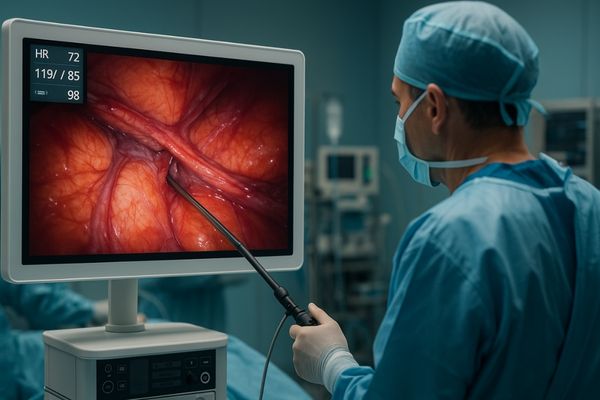
Better visualization contributes to shorter surgical times, fewer complications, and improved patient recovery outcomes. I have seen that Reshin’s MS550P 55" 4K surgical monitor6 significantly enhances visual information, leading to a reduction in surgical errors. The detail and clarity of the monitor allow surgeons to see small details that might otherwise be missed, which can be important for preventing complications. As surgical procedures become more technologically advanced, high-resolution displays7 will play a pivotal role in integrating imaging data with real-time surgical navigation.
Modern operating rooms increasingly rely on high-resolution displays for complex procedures
Modern surgical environments demand high-quality visual tools to manage the complexities of advanced procedures. Modern operating rooms rely on high-resolution displays to manage complex procedures because these monitors provide the clarity and detail needed for precision.
High-resolution displays are essential in modern operating rooms for performing complex procedures. These monitors integrate imaging data with real-time surgical navigation, offering surgeons the visual support needed for advanced techniques and better patient outcomes.
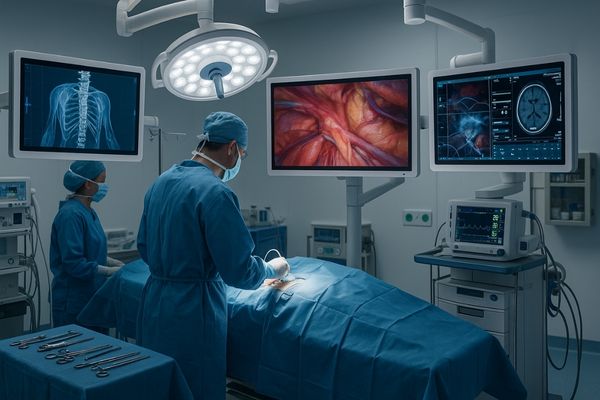
Monitors from brands like Reshin often combine high resolution with color accuracy and luminance stability, which is important for consistent intraoperative assessments. I’ve observed how the MD120C 12MP high-precision diagnostic monitor8 improves the integration of imaging data with real-time surgical navigation, which is crucial for advanced surgical procedures. The clarity and detail of the monitor allow surgeons to visualize complex anatomical structures and make precise decisions during surgery. The use of high-resolution displays9 in modern operating rooms is expected to continue to grow as surgical techniques become more advanced.
Reshin’s high-resolution solutions set benchmarks for surgical imaging performance
Surgical imaging requires precision, and high-resolution monitors set the standard for what surgeons can expect from their visual equipment. Reshin’s high-resolution solutions set benchmarks for surgical imaging performance because they provide the clarity, color accuracy, and stability required for optimal surgical outcomes.
Reshin’s high-resolution solutions set benchmarks for surgical imaging performance by combining high resolution with color accuracy and luminance stability. Our monitors ensure consistent intraoperative assessments, enabling surgeons to achieve optimal surgical outcomes.
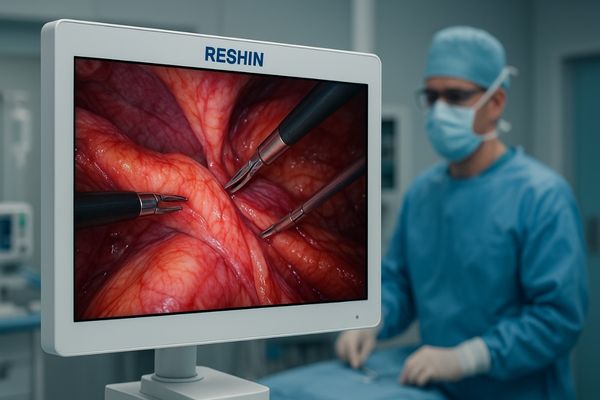
As surgical procedures become more technologically advanced, high-resolution displays will play a key role in integrating imaging data with real-time surgical navigation. I believe the MS275P 27" 4K surgical monitor10 from Reshin exemplifies this benchmark, offering exceptional clarity, color accuracy, and stability, which are essential for modern surgical environments. These monitors provide the precision and reliability needed for the best medical outcomes. This commitment to quality ensures that surgeons have the tools they need to perform at their best, leading to improved patient outcomes and satisfaction.
The following table summarizes the key features of Reshin’s high-resolution surgical monitors:
| Feature | Description | Benefit |
|---|---|---|
| High Resolution | 4K and higher resolutions for detailed visualization | Improved surgical precision and reduced risk of errors |
| Color Accuracy | Accurate color reproduction for clear differentiation of tissues and structures | Enhanced ability to distinguish between healthy and diseased tissue |
| Luminance Stability | Consistent brightness levels to ensure optimal visibility throughout the procedure | Reduced eye strain and improved focus during long surgical procedures |
| Seamless Integration | Compatibility with various surgical and endoscopic systems | Streamlined workflow and improved efficiency in the operating room |
Conclusion
High-resolution monitors are crucial for enhancing surgical precision by offering superior image clarity, which in turn supports better differentiation of anatomical structures and reduces the risk of surgical errors. To equip your OR with high-resolution surgical displays, contact Reshin at martin@reshinmonitors.com.
- Discover how high-resolution monitors can significantly enhance surgical precision and improve patient outcomes. ↩
- Learn about the importance of surgical visualization and its direct correlation with successful surgical results. ↩
- This resource will guide you on essential features of surgical monitors, ensuring optimal performance in medical procedures. ↩
- Explore how high-resolution displays enhance surgical precision and safety, crucial for successful outcomes. ↩
- Learn about essential features of surgical monitors that improve visualization and surgical success. ↩
- Explore this link to understand how surgical monitors enhance precision and safety in surgeries. ↩
- Discover the impact of high-resolution displays on surgical performance and patient recovery. ↩
- Discover why a 12MP monitor is crucial for surgical navigation and decision-making in complex procedures. ↩
- Explore this link to understand how high-resolution displays enhance surgical precision and improve patient outcomes. ↩
- Discover the advantages of 4K surgical monitors in enhancing clarity and accuracy during surgeries. ↩


